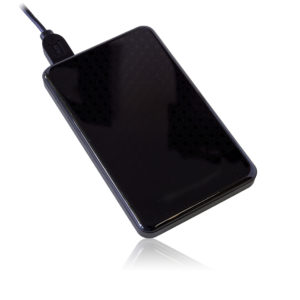 An I/O Device Error is a potentially serious symptom that occurs when a computer cannot interface (trade data) with a storage device. It’s commonly associated with Windows, though input/output errors can occur on any operating system.
An I/O Device Error is a potentially serious symptom that occurs when a computer cannot interface (trade data) with a storage device. It’s commonly associated with Windows, though input/output errors can occur on any operating system.
You might encounter an error message that reads something like:
Operation Can’t Be Performed Because of an I/O Device Error
That message doesn’t provide much actionable information — and that’s simply because the computer doesn’t know why the device is failing to respond.
What causes an I/O device error?
I/O errors can occur for a variety of reasons, and some of them can be easily addressed:
- The computer’s USB port (or other connection port) is not working properly, or the USB cable is damaged.
- Flash drives may prompt an I/O error if their connectors are dirty, wet, or damaged.
- The storage device has an unexpected drive letter. In other words, software expects the hard drive (or other device) to have one drive letter, while the operating system has assigned a different letter.
- The drivers for the target device are corrupt or incompatible.
- The operating system is attempting to transfer data via an operation that the device does not support.
- The storage device has damaged firmware.
- The storage device has suffered an electronic or physical malfunction.
Unfortunately, the last scenario is one of the most common for external hard drives and solid-state drives (SSDs). Read/write head crashes, firmware problems, motor seizures, and other issues may generate an I/O error, and in those cases, operating the hard drive can cause permanent data loss.
Related: How Can I Tell If My Hard Drive Is Broken?
Can I fix a hard drive, SSD, or other device with an I/O device error?
If you notice any signs of a physical drive failure, we strongly recommend seeking assistance from a professional data recovery provider. If your drive has failed, you may have only one opportunity to recover your files — running the drive can cause platter scoring, extensive file corruption, and other issues that will impair recovery efforts.
Common signs of physical hard drive failure include:
- The drive makes unusual noises such as clicking, grinding, or whirring.
- Prior to the I/O error, the drive operated slowly, or the operating system had trouble recognizing the device.
- The operating system lists the drive with the incorrect capacity, or does not recognize the file structure.
- The drive has recently sustained physical damage from a drop, water exposure, or electronic event (such as a power surge).
If you haven’t noticed any of these symptoms, you can’t necessarily rule out hard drive failure — and if the data on the device is important, the best practice is to get it to a professional data recovery laboratory.
However, if the data is not important — or you’re willing to take a significant risk — you can try basic steps to resolve the I/O error:
- Check for new drivers for the affected device. Read Microsoft’s guide for updating drivers manually in Windows.
- Try plugging the drive into a different USB port.
- Try using a different cable.
- Plug the drive into another computer.
- If the I/O error only occurs when using certain software, check for a software update (or alternately, roll back the software to an earlier version that was able to access the device).
- If the device’s drive letter has changed recently, change the drive letter using Windows Disk Management.
If these steps don’t resolve the issue, you may need to replace the device. Learn why we don’t recommend using data recovery software to fix I/O errors.
Expert Resources for Professional Data Recovery
Datarecovery.com provides risk-free evaluations for all hard drive and SSD brands, makes, and models. We support our services with a no data, no charge guarantee: If we’re not able to recover the files you need, you don’t pay for the attempt.
To schedule a free evaluation, submit a case online or call 1-800-237-4200 to speak with a member of our team.




